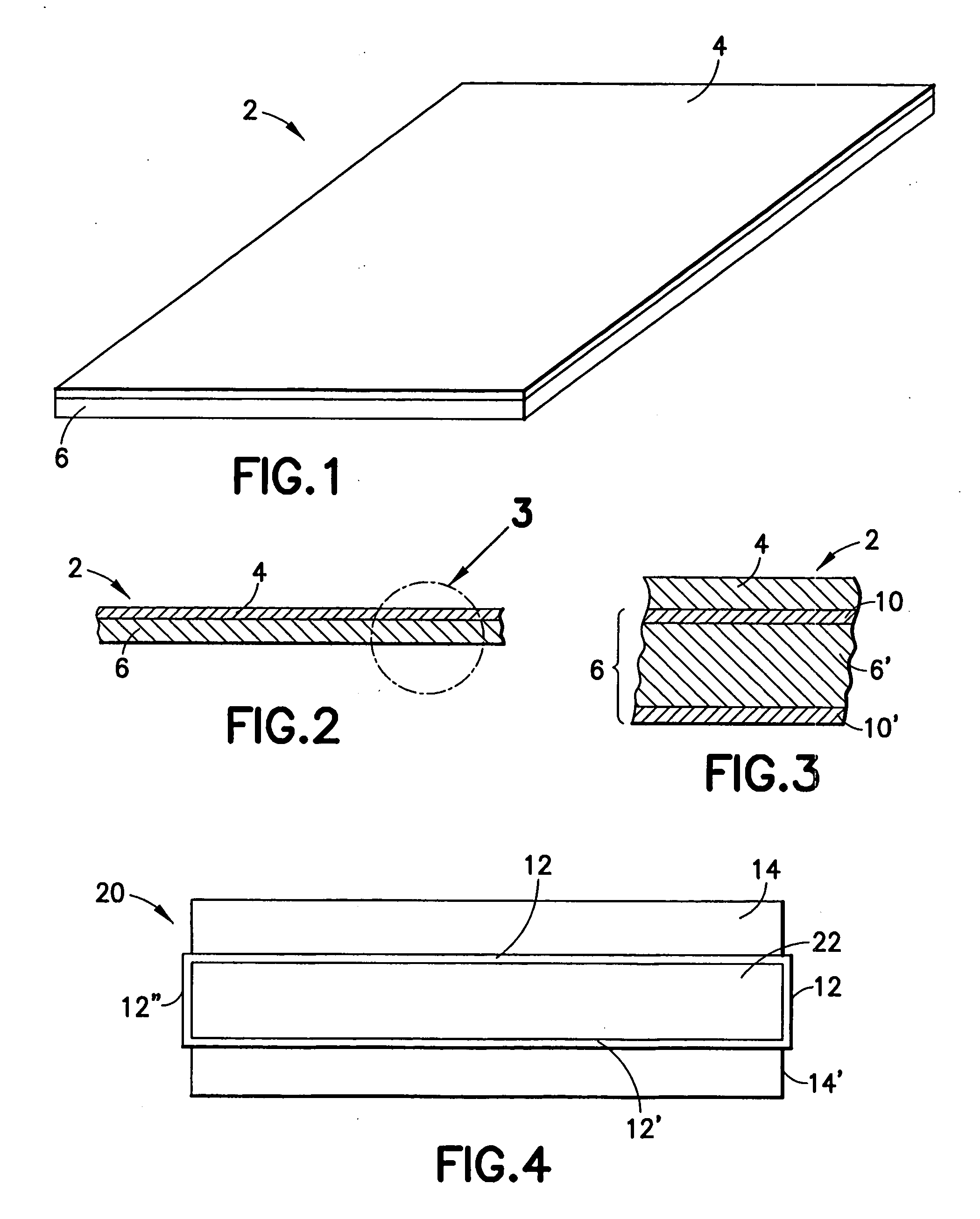Composite metal construction and method of making suitable for lightweight cookware and a food warming tray
a technology of lightweight cookware and composite metal, which is applied in the direction of application, baking vessels, superimposed coating process, etc., can solve the problems of bare aluminum cookware, easy to be bent or deformed, and difficult to clean bare aluminum cookware, so as to improve heat absorption, improve appearance, and improve the effect of heat absorption
- Summary
- Abstract
- Description
- Claims
- Application Information
AI Technical Summary
Benefits of technology
Problems solved by technology
Method used
Image
Examples
Embodiment Construction
Lightweight Cookware Embodiment
[0041] A composite metal sheet 2 of the present invention shown in FIGS. 1-3 is suitable for making lightweight cookware. The composite metal sheet 2 comprises a layer 4 of very thin stainless steel which functions as the food contacting cook surface, and a thicker layer 6 of aluminum, roll bonded to the stainless steel layer 4. The aluminum layer 6 is preferably a sheet of Alclad aluminum which itself is a prebonded composite consisting of an aluminum alloy core layer 6′ and outer layers 10 and 10′ of substantially pure aluminum. A typical Alclad aluminum has a core layer 6′ of an aluminum alloy for strength, such as type 3004, 3005 or 5005, while the substantially pure outer layers 10 and 10′ may be Type 1100, 1130, 1230, 1145, 1175 or 7072. Type 3004 and Type 1145 aluminum are preferred. The pure aluminum layer 10 provides excellent roll bonding with the stainless steel layer 4. After the cooking utensil is formed, the aluminum layer 10′ which form...
PUM
| Property | Measurement | Unit |
|---|---|---|
| Temperature | aaaaa | aaaaa |
| Temperature | aaaaa | aaaaa |
| Fraction | aaaaa | aaaaa |
Abstract
Description
Claims
Application Information
 Login to View More
Login to View More - R&D
- Intellectual Property
- Life Sciences
- Materials
- Tech Scout
- Unparalleled Data Quality
- Higher Quality Content
- 60% Fewer Hallucinations
Browse by: Latest US Patents, China's latest patents, Technical Efficacy Thesaurus, Application Domain, Technology Topic, Popular Technical Reports.
© 2025 PatSnap. All rights reserved.Legal|Privacy policy|Modern Slavery Act Transparency Statement|Sitemap|About US| Contact US: help@patsnap.com



